Tim Mosso visits ‘The Amelia’ Concours d’Elegance Part 2: Incredible Cars including a Fantastic Vintage Rolls Royce
by Tim Mosso
The Amelia 2022 was my first concours d’elegance experience, and it left an impression. In fact, it left such a mark that one article cannot encompass the entirety of the experience. Explore my initial Part 1 retrospective review of Amelia Island ’22 for a primer on the type and variety of cars that turn out for a premier event like Greenwich, Pebble Beach, and The Amelia.
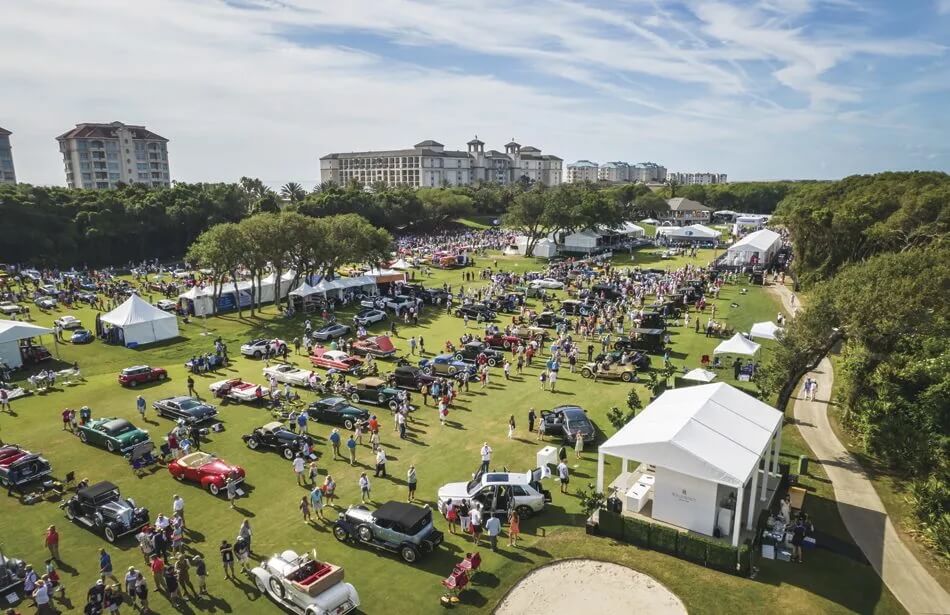
The Amelia Concours d’Elegance (photo courtesy www.ameliaislander.com)
Once you’re up to speed, this installment delves even deeper into the scope of classic machinery on the field during my visit.
Ferrari is the most famous automotive nameplate on and off the track. Glamorous cars, beautiful people, and epic events are never in short supply when the Scuderia and its road-legal counterparts are present. Along those lines, the 1962-1964 Ferrari 250 GTO notably served as both a winning race car and the world’s fastest road car.
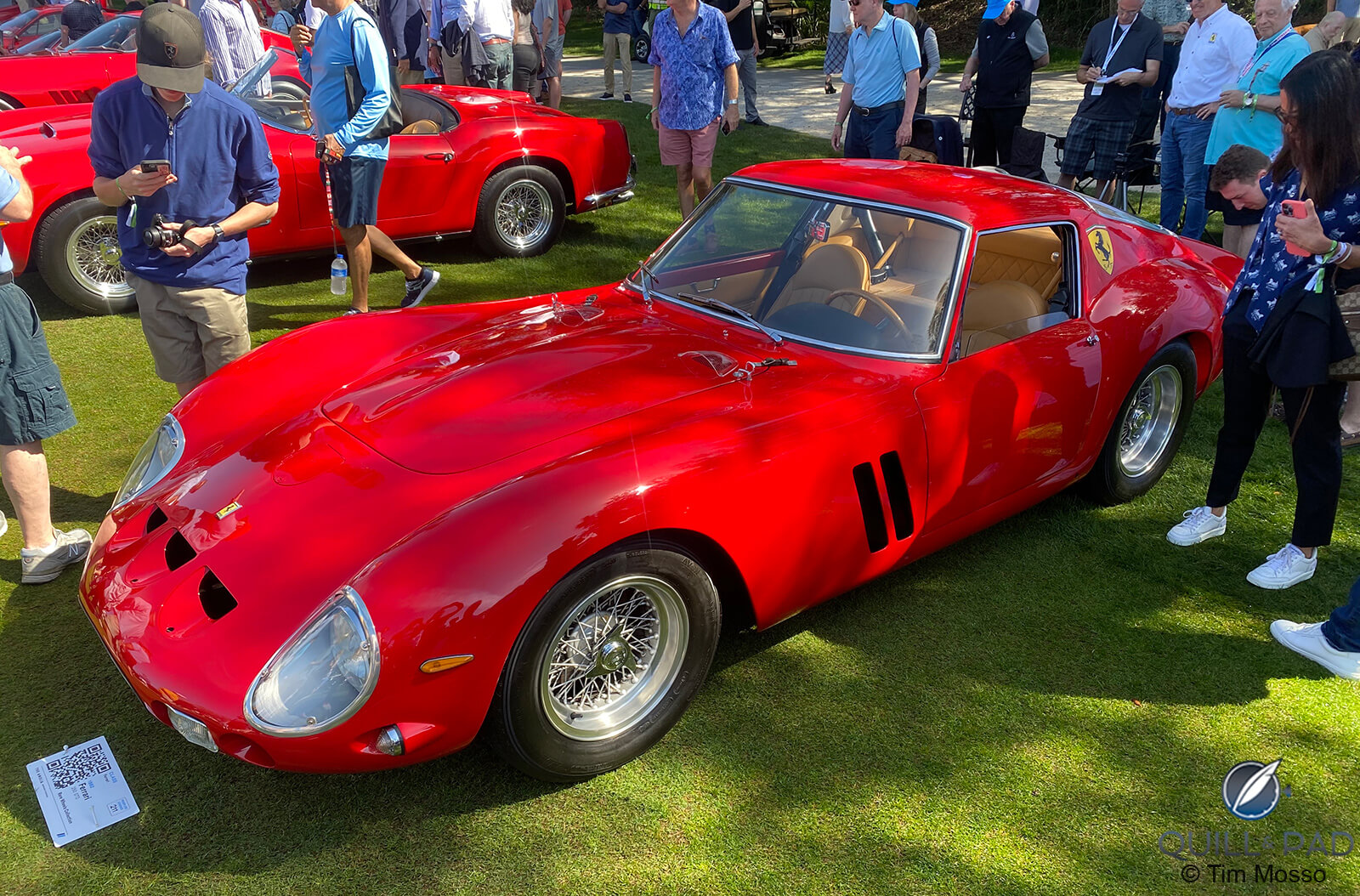
Ferrari 250 GTO
With 100 horsepower per liter of engine displacement and mass of only 900 kilograms, the GTO is the rare 1960s performance car that remains fast even by today’s standards of speed.
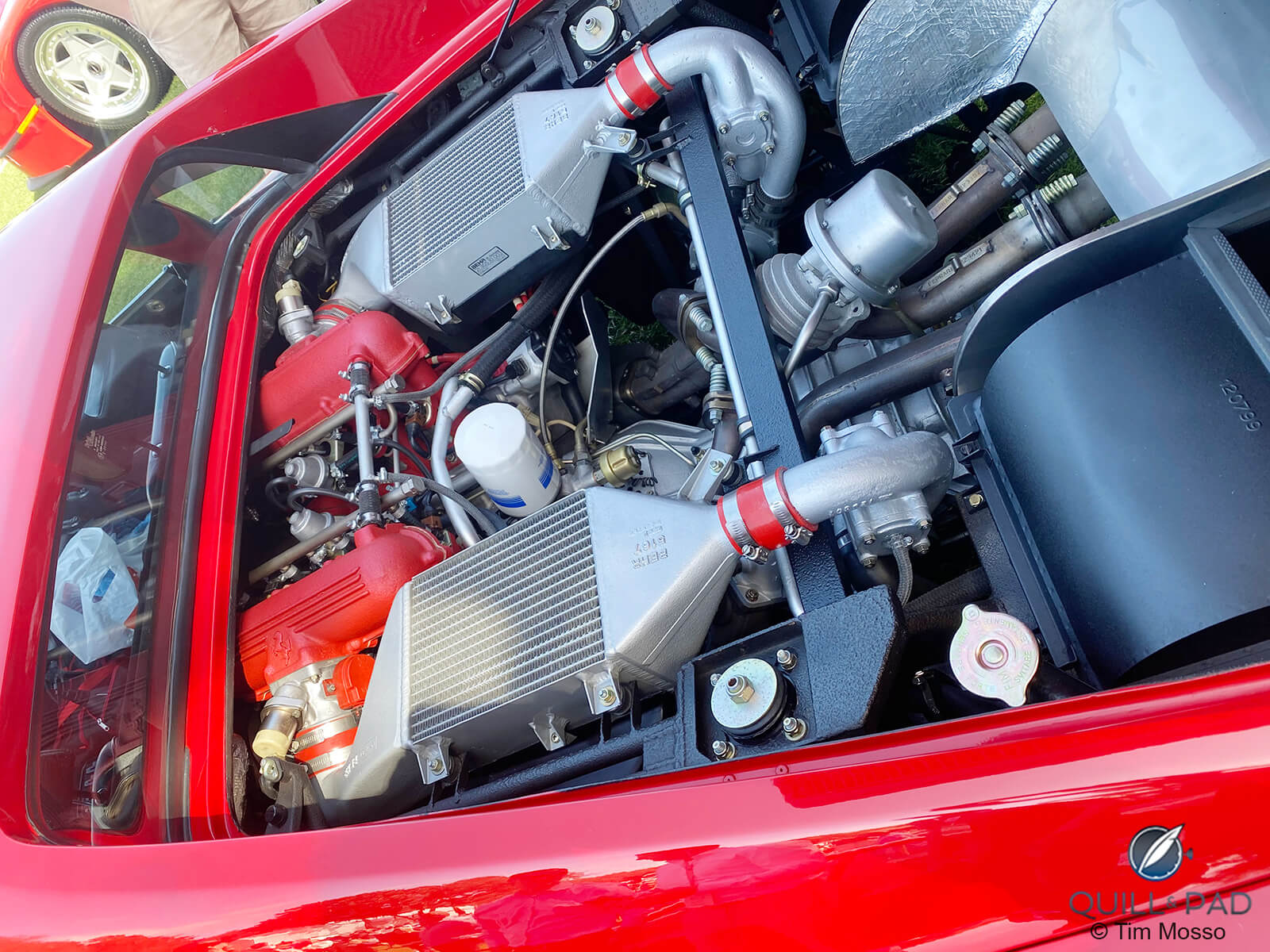
Engine of the Ferrari 288 GTO
On and off for the last four decades, Ferrari’s 250 GTO has held the title of “world’s most valuable car.” Thanks to auction results that reached seven figures (USD) as far back as the 1980s, the GTO has been a regular feature in “Guinness World Records.”
With only 36 examples manufactured, the GTO boasts tantalizing rarity, and even a wreck is worth reconstructing regardless of condition. Perhaps most surprising from my first-time concours perspective was the total absence of any barrier between showgoers and the Ferrari GTO on display.
At an event where owners pay professional detailers thousands for show-quality detailing, the ease of planting fingerprints on a $51,000,000 car left me shocked.
Of particular interest to Ferrari brand enthusiasts was the 1985 GTO – a car Ferrari itself considers the first of its flagship supercar line. To everyone but Ferrari, the 1980s GTO is known as the “288 GTO” in order to differentiate the newer car from the ‘60s original.
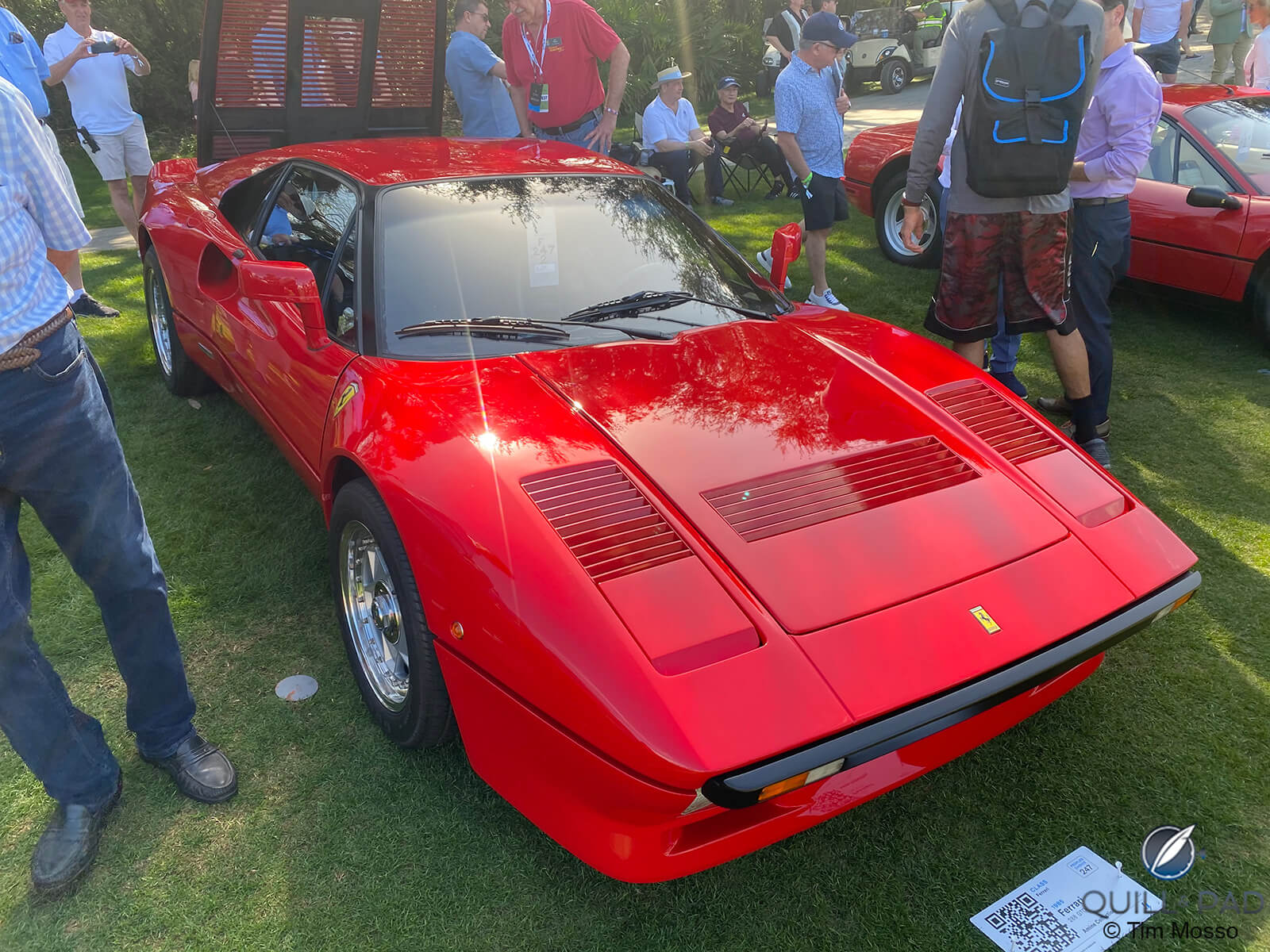
Ferrari 288 GTO
Loosely based on the contemporary Ferrari 308, the 288 GTO is primarily a unique construct that was designed with Group B rally racing in mind.
From 1984 to 1987, 272 examples of the Ferrari 288 GTO were manufactured. This makes the GTO more exclusive than each of the subsequent F40, F50, Enzo, LaFerrari, and F80 supercars.

Twin-turbocharged and intercooled 2.9-liter V8 engine of the Ferrari 288 GTO
With a twin-turbocharged and intercooled 2.9-liter V8, the 395 horsepower 288 GTO was the most powerful Ferrari of its time – 12-cylinder models included. Its power and 366 lb-ft marked a new era in supercar performance and paralleled the rise of turbocharged race cars during the 1980s.
Further, the GTO’s turbocharged V8 powertrain laid the groundwork for Ferrari’s subsequent F40 and the numerous road racing victories achieved by that car.

Ferrari 250 California Spyder
Fans of the film Ferris Bueller’s Day Off will recognize the Ferrari 250 California Spyder as the hero car – and late casualty – of the famous American comedy. I must admit that my younger self gasped in horror when the movie car met its fate, but even in 1986, a genuine California was too valuable to decimate for a gag.
The Bueller movie car was a short wheelbase replica by Modena Design, but this long wheelbase 1963 example at Amelia Island was the real thing. With only 106 built, the V12-powered 250 California Spyder is a premier Ferrari collectible, a genuine investment comparable to real estate or fine art, and an exemplar of automotive sculpture.
But don’t undersell the Ferris Bueller effect on the market for these Ferraris; the film has had such an impact on their collectability that one of the movie replicas sold for $396,000 in 2020.
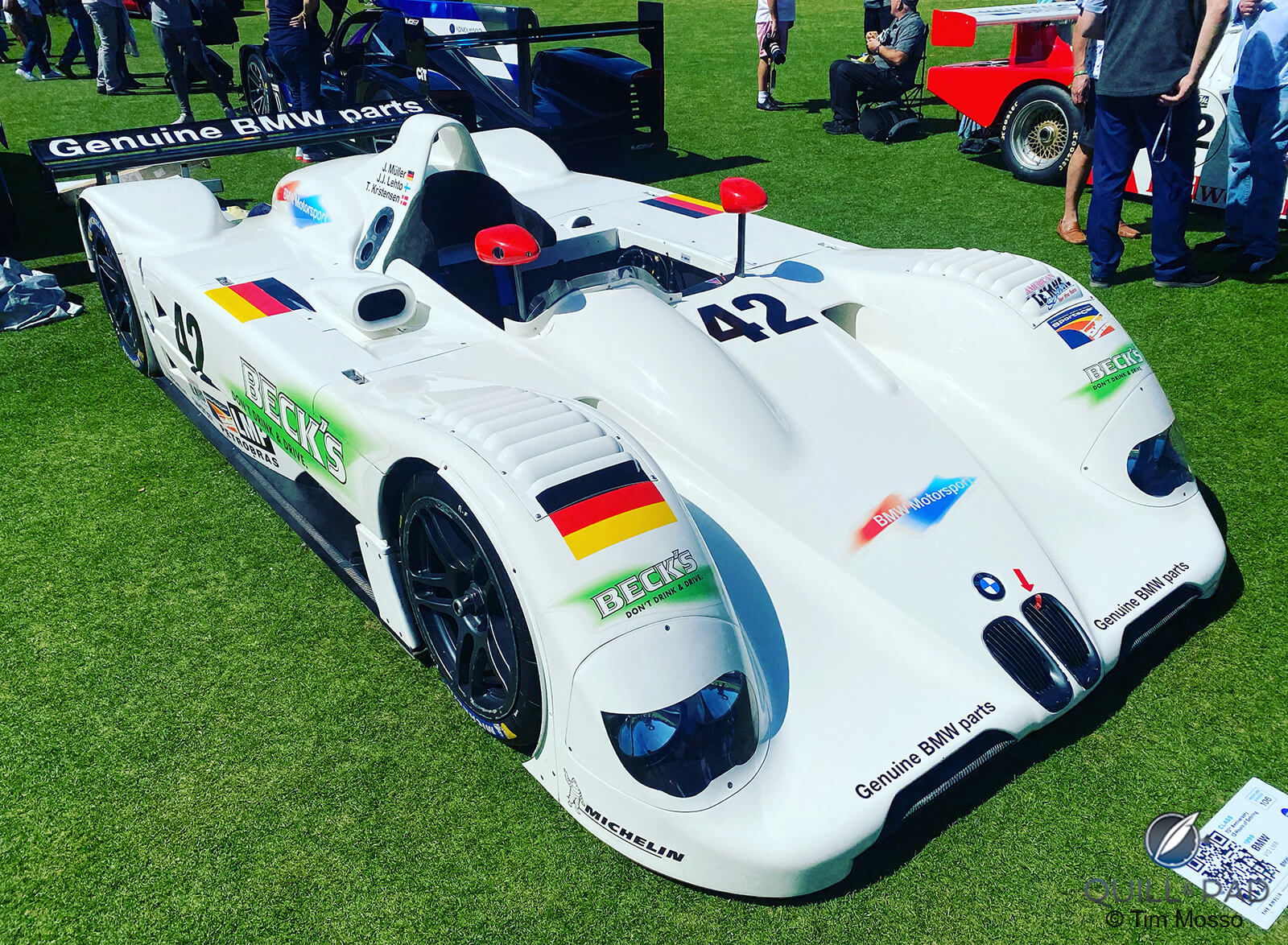
BMW V12 LMR
Race cars had their day at The Amelia 2022. One of the most celebrated was the BMW V12 LMR that won the 12 hours of Sebring and 24 Hours of Le Mans in 1999. While the BMW-powered McLaren F1 GTR triumphed at Le Mans in 1995, the chassis of the 1999 car was officially BMW branded but developed by WilliamsF1.
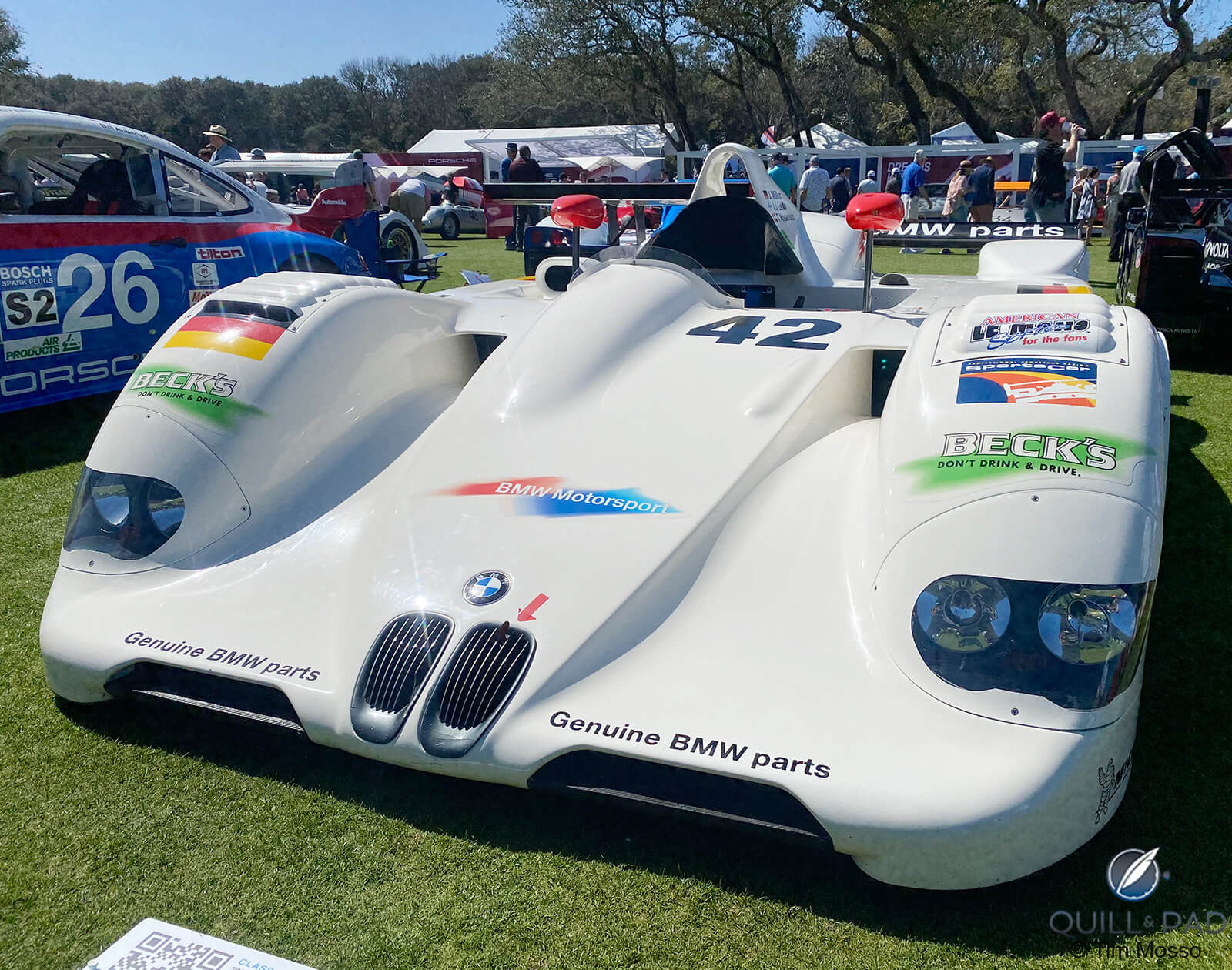
BMW V12 LMR
Le Mans ‘99 featured the most competitive prototype field in a decade with serious multi-car efforts from BMW, Mercedes-Benz, Toyota, Panoz, and Nissan. Drivers from past and future Formula 1 grids helmed these factory-campaigned machines. As ever at Le Mans, BMW’s victory came down to a combination of endurance, luck, and speed.
BMW’s V12 LMR employed several advancements over previous downforce prototypes including its reliance on “false floor” underbody downforce rather than topside splitters and wings. The result was a car featuring less drag but just as much downforce as competitors.
A close reading of the rule book led to a second breakthrough: the drag-reducing single roll hoop. While previous open-top Le Mans prototypes employed full-width roll bars, BMW’s V12 LMR reflected its builder’s interpretation of race rules that mandated roll-protection for the driver’s seat only.
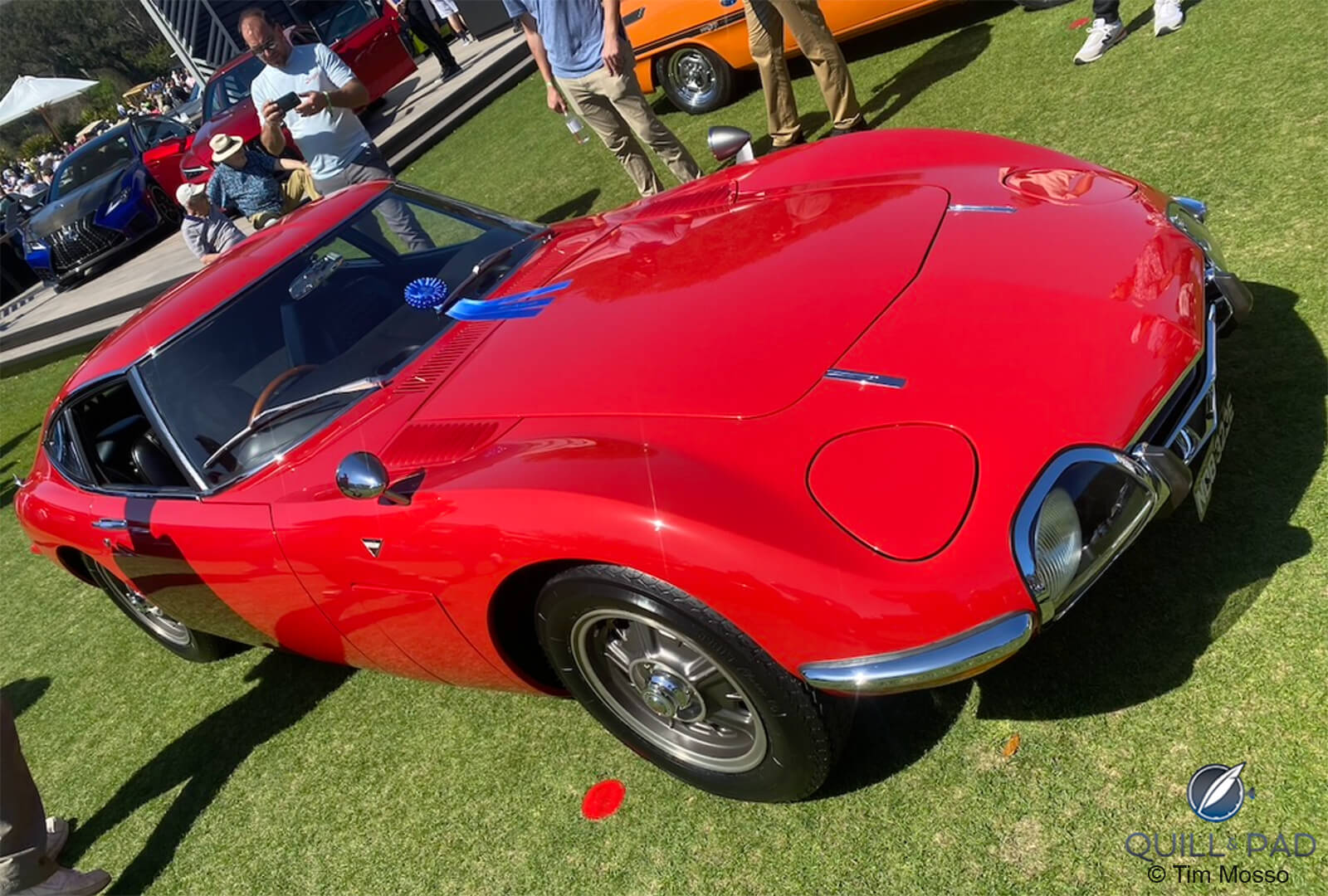
Toyota 2000GT
Japanese classic cars have finally reached the main lawns of concours events. Arguably the ultimate vintage Japanese car, the 1967-1970 Toyota 2000GT rivaled the contemporary Jaguar XKE for beauty and grace. With a smooth straight-six, four-wheel independent suspension, fastback profile, and a long hood, the Toyota was a legitimate E-Type rival from a company still known for economy cars.
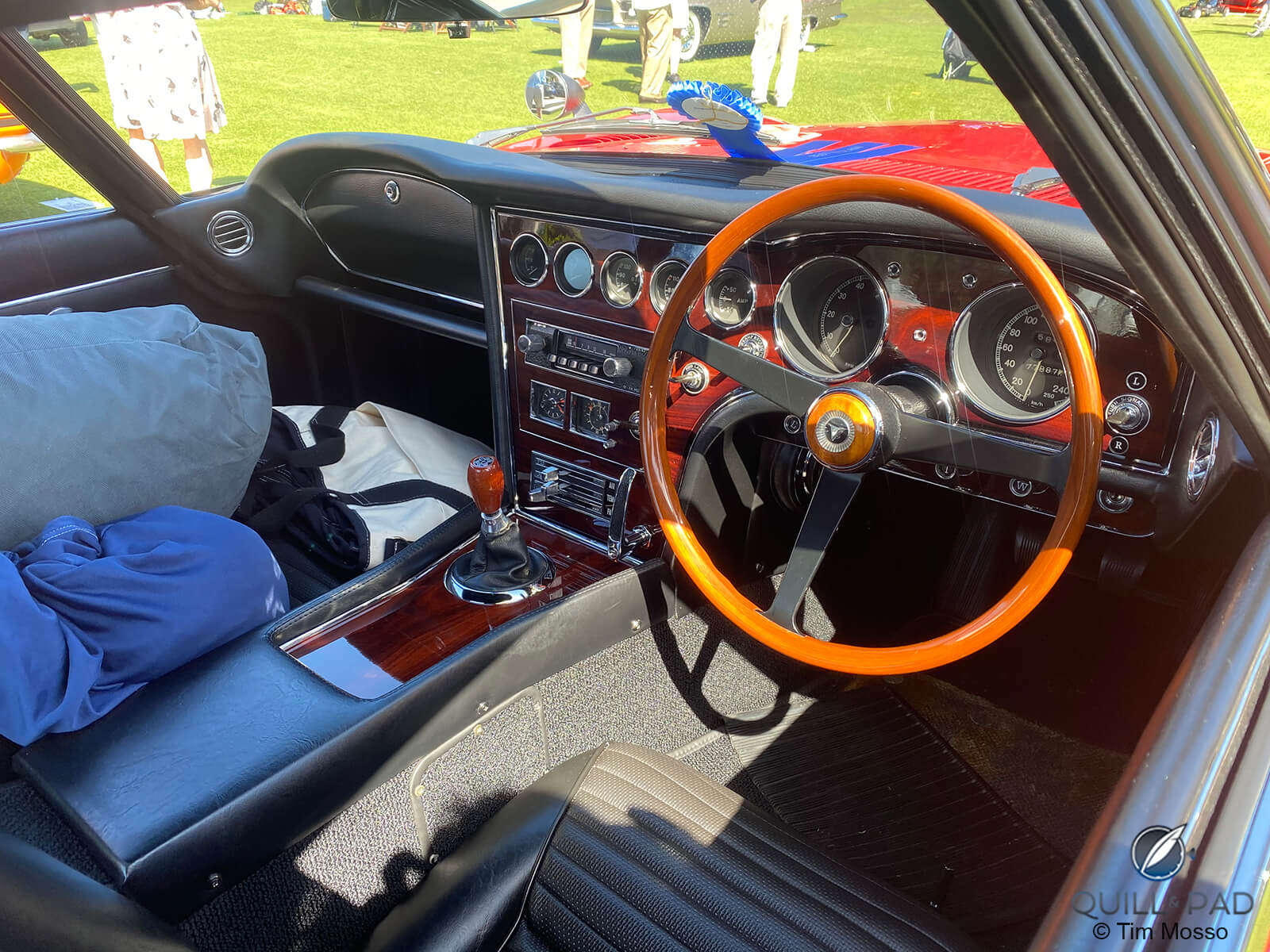
Inside the Toyota 2000GT
Only 351 examples of the 2000GT were built, and these rank among the most collectible cars of their era – Japanese or otherwise.
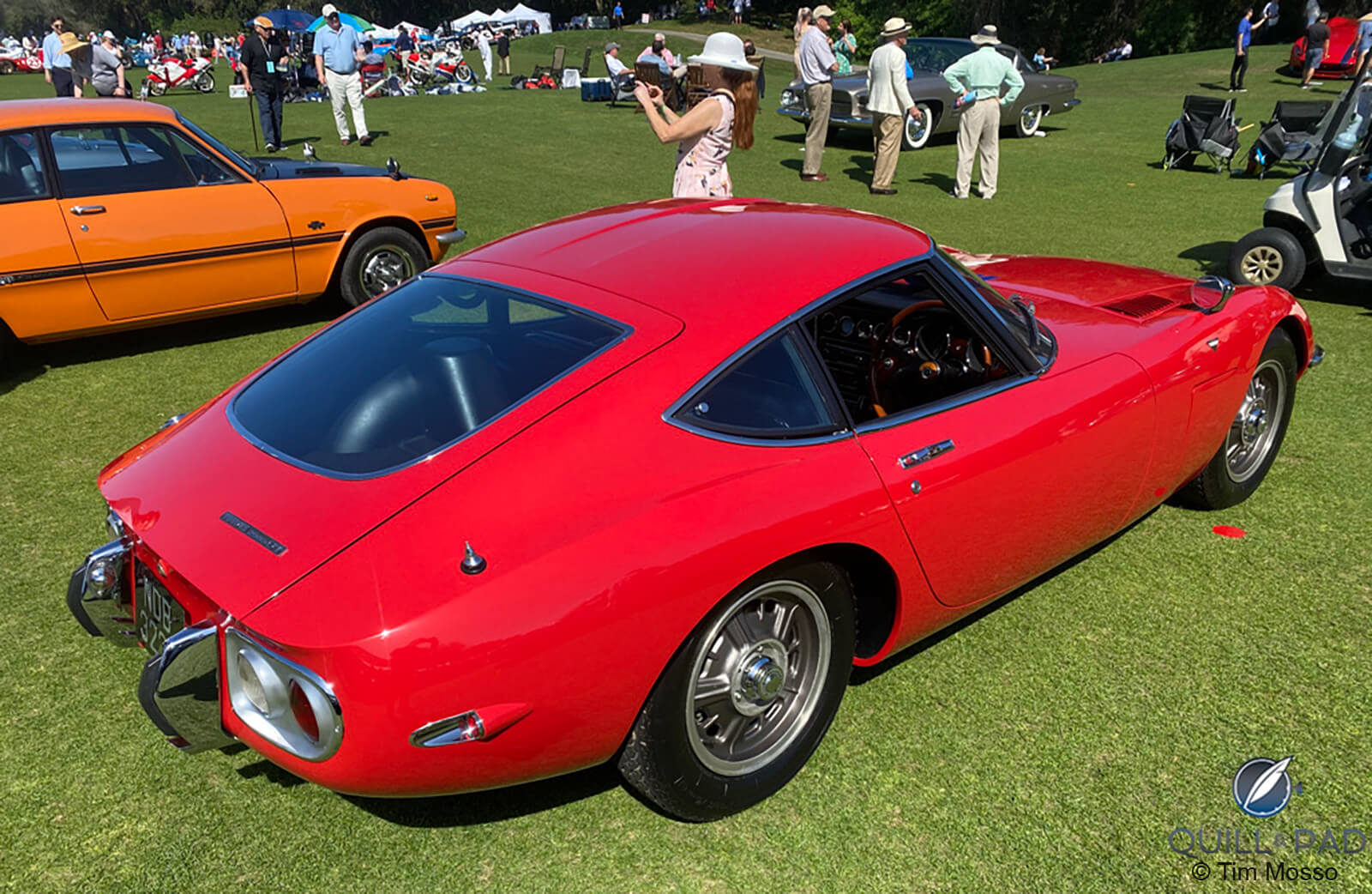
View from the back of the Toyota 2000GT
In a true sign of changing times at premier car shows, the 2000GT wasn’t even the only vintage Toyota sports car on the lawn this day. The older, far smaller, and far quirkier Sports 800 made the scene at Amelia Island. Built from 1965 to 1969, the Sports 800 was far more targeted to the Japanese domestic market than the export-oriented 2000GT.
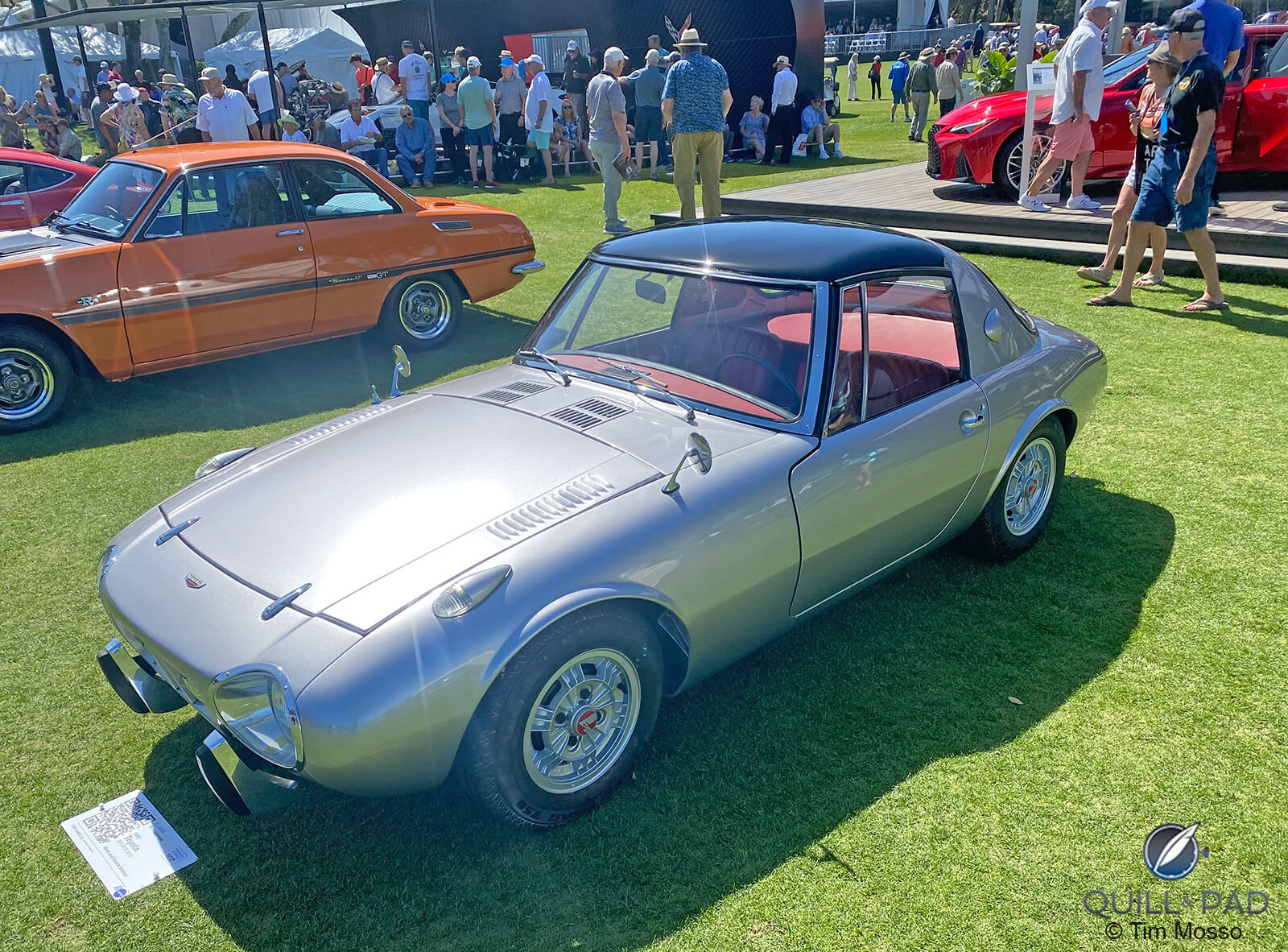
Toyota Sports 800
Virtually a microcar at only 580 kilograms, the Sports 800 weighed less than a modern-day Smart FourTwo. With only a two-cylinder boxer engine of 790cc, the 800 relied on partially aluminum unit construction and advanced aerodynamics to deliver stimulating performance.
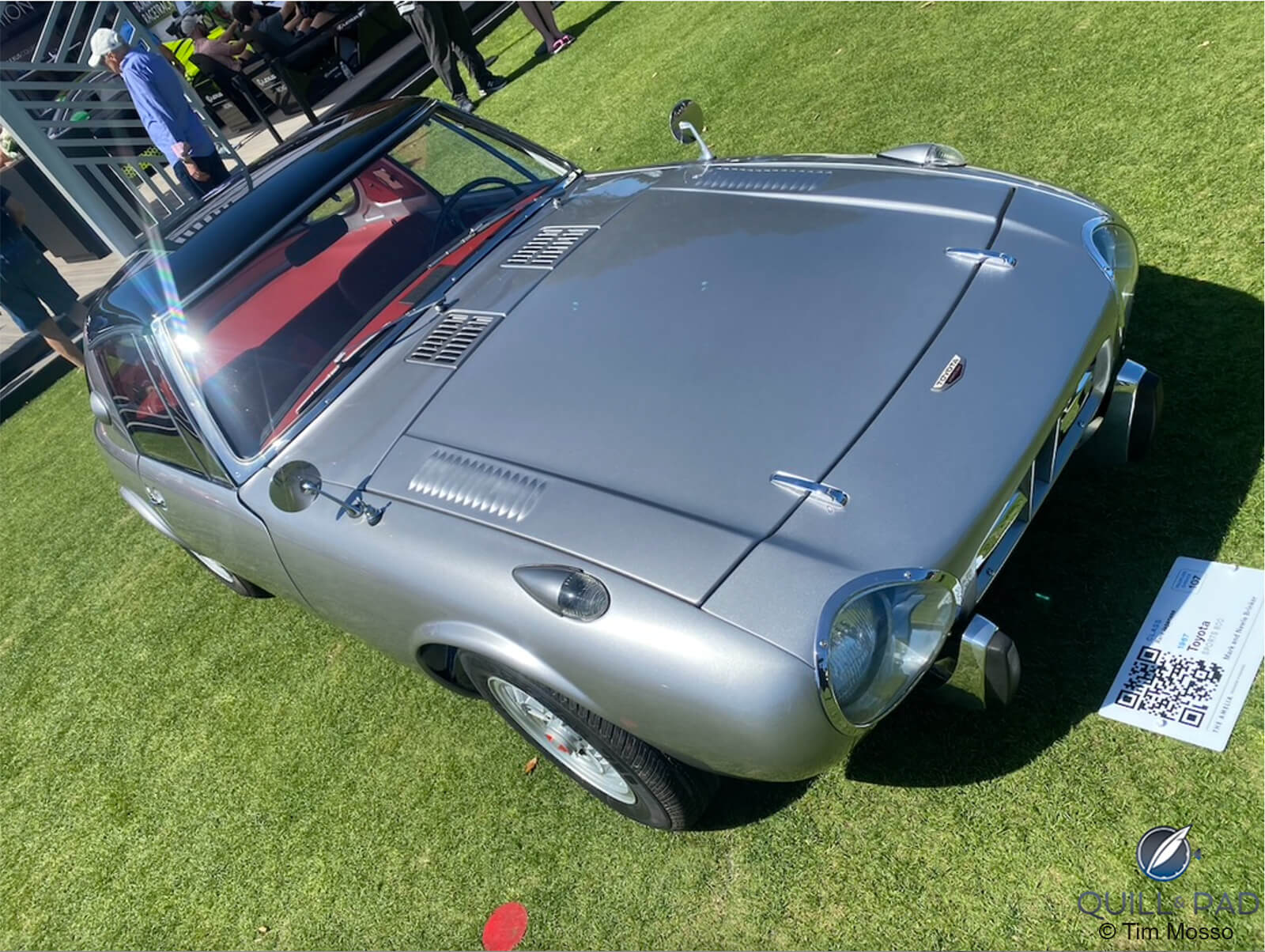
Toyota Sports 800
In a futuristic nod, Toyota equipped the Sports 800 with a removable targa center roof section two years before Porsche introduced its more famous 911 Targa variant.
Mazda is known globally for its unique commitment to the Wankel-style rotary engine. While many companies explored rotary engines or built them in limited runs, Mazda’s enthusiasm for the piston-free Wankel has endured from the 1960s to the present.

Mazda Cosmo L10
Like Germany’s NSU Spider, the 1967-1972 Mazda Cosmo L10 was calculated to drive interest in the rotary engine by combining the futuristic power plant with an exciting sports car body. Mazda’s original Cosmo ranks as one of the greatest styling efforts of the 1960s and still looks razor sharp to modern eyes.
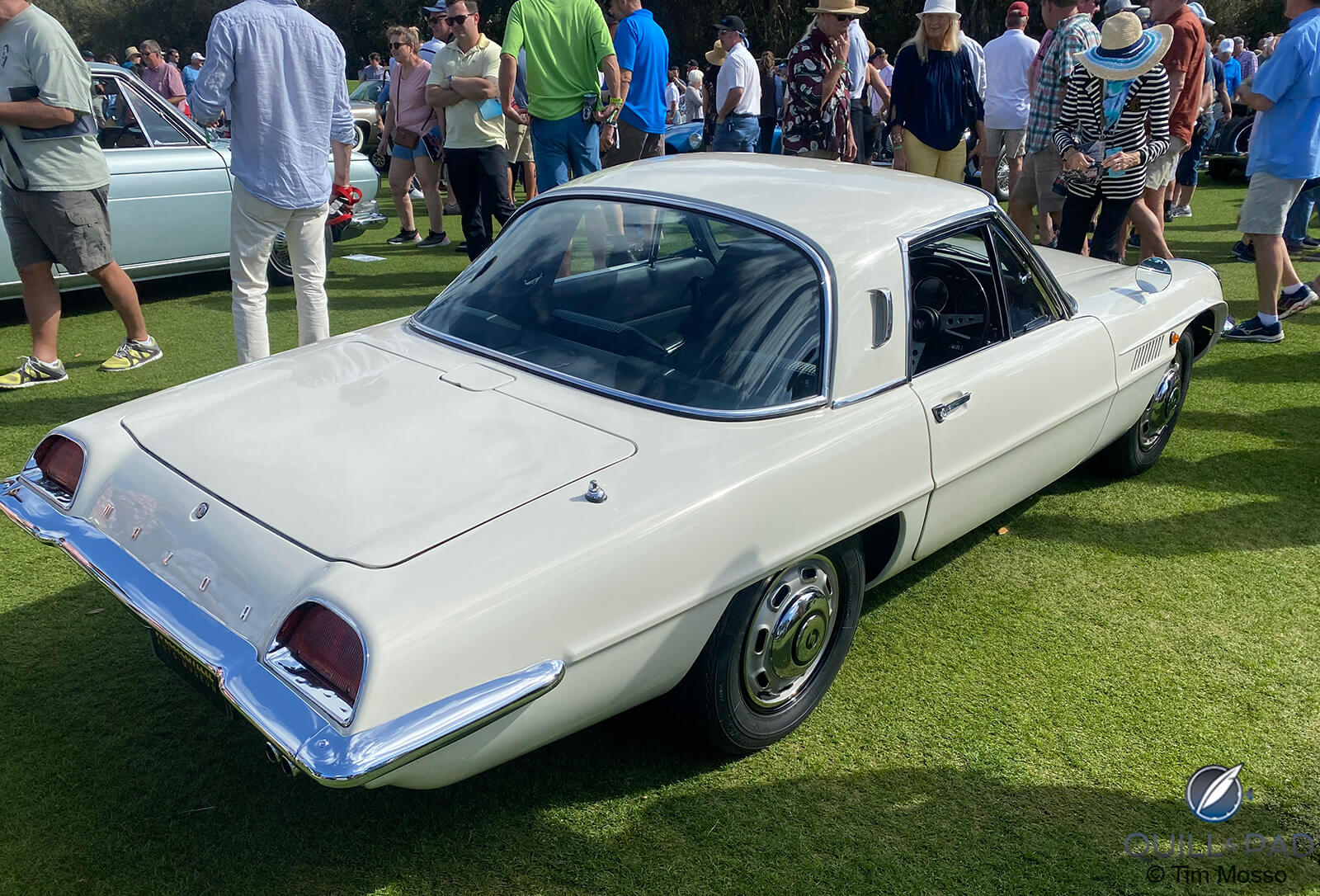
Back of the Mazda Cosmo L10
Ironically, the appeal of the original Cosmo’s design has outlived the relevance of the very rotary technology that Mazda’s sports car was intended to promote.
Vintage and extreme vintage automobiles abounded. Fabrication techniques unseen on cars since the early postwar period were on display as a testament to the industry of restoration specialists that underpins the automotive concours movement.

Vintage Rolls Royce with timber carriage
As the successors to carriage builders of the horse-drawn era, coach builders constructed automotive bodies in the same fashion as the horse-drawn carriages of times past. This Rolls Royce exhibited a mid-process reconstruction revealing the astonishing amount of wood carpentry involved in traditional automotive body work.

Vintage Rolls Royce with timber carriage
The wood is structural and remains in place under the final metal outer panels. While virtually all mainstream automakers discontinued wooden frames by 1950, vintage cars and their maintenance needs are sufficient to sustain the trade skills of wood-specialist coach workers.
Today, American retailer Sears is a perennial corporate deathwatch candidate having filed for bankruptcy once already following decades of decline. But in the early 1900s, Sears was the largest retailer in America and among the world’s largest companies. Its sprawling phonebook-sized catalog listed every conceivable item from household staples to actual houses.
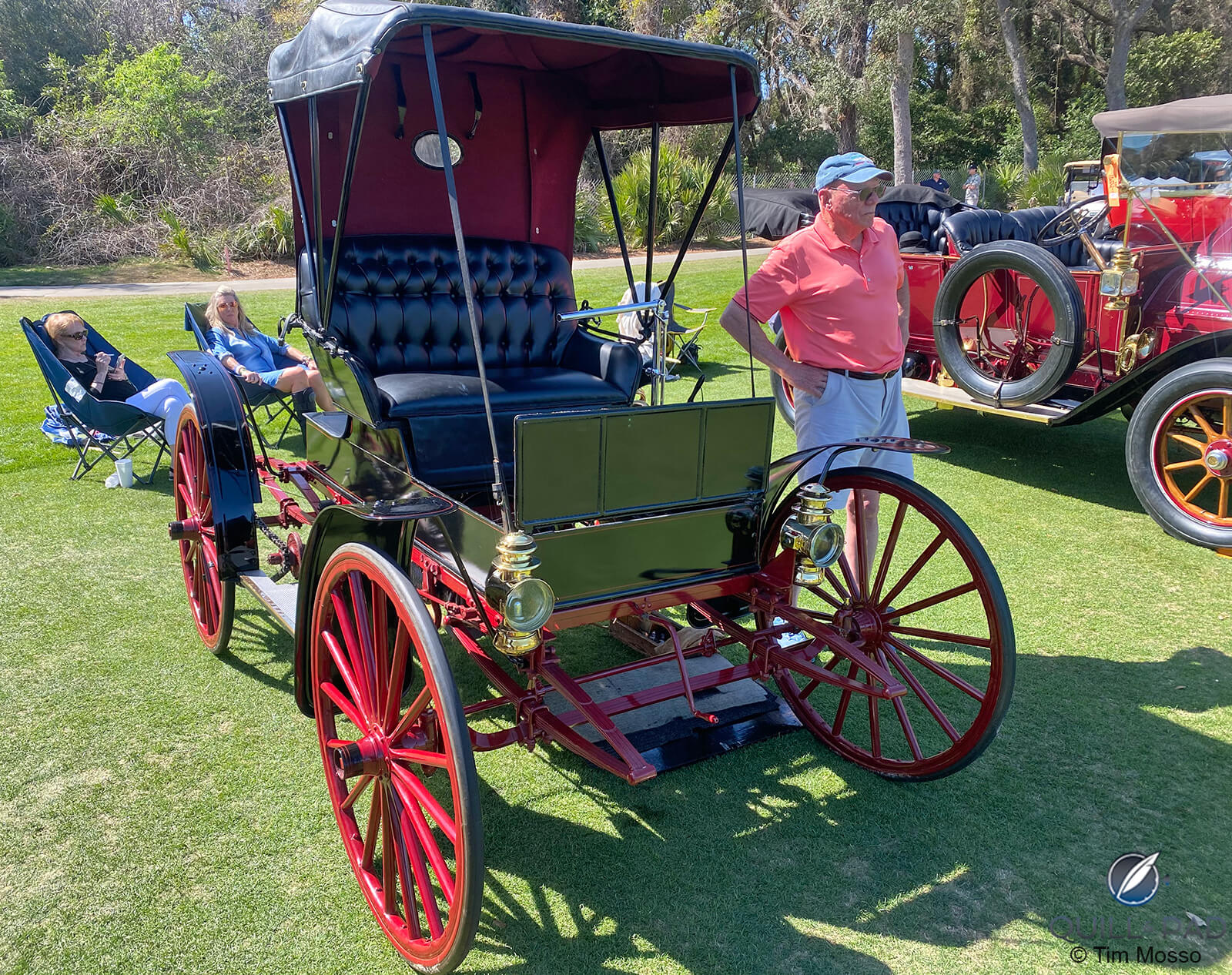
Sears Runabout
Cars joined the list in 1908, when Sears, Roebuck, and Company introduced a series-built car available for under $400. The two-cylinder Sears Runabout was designed to be hand-cranked and steered with a tiller. Live axles and undamped leaf springs handled suspension.
Its design was barely distinguishable from a horse-drawn buggy, and the top speed of 40 kms/hour (25 miles-per-hour) must have seems terrifying given the car’s dynamic limitations. In 1903, it might have been a bestseller, but by 1908, Ford’s revolutionary Model T had hit the road with real-car performance and features to match.
The Sears Runabout at Amelia Island was among the oldest cars on display and one of the clearest links to the era when cars were plausibly described as “horseless carriages.”
Relatively modern coach-built cars had a presence at Amelia Island. Although traditional custom-bodied cars dwindled as even luxury manufacturers brought body fabrication in-house, specialists like Italy’s Carrozzeria Ghia continued to offer scratch-built bodies and interiors for buyers with regal budgets.
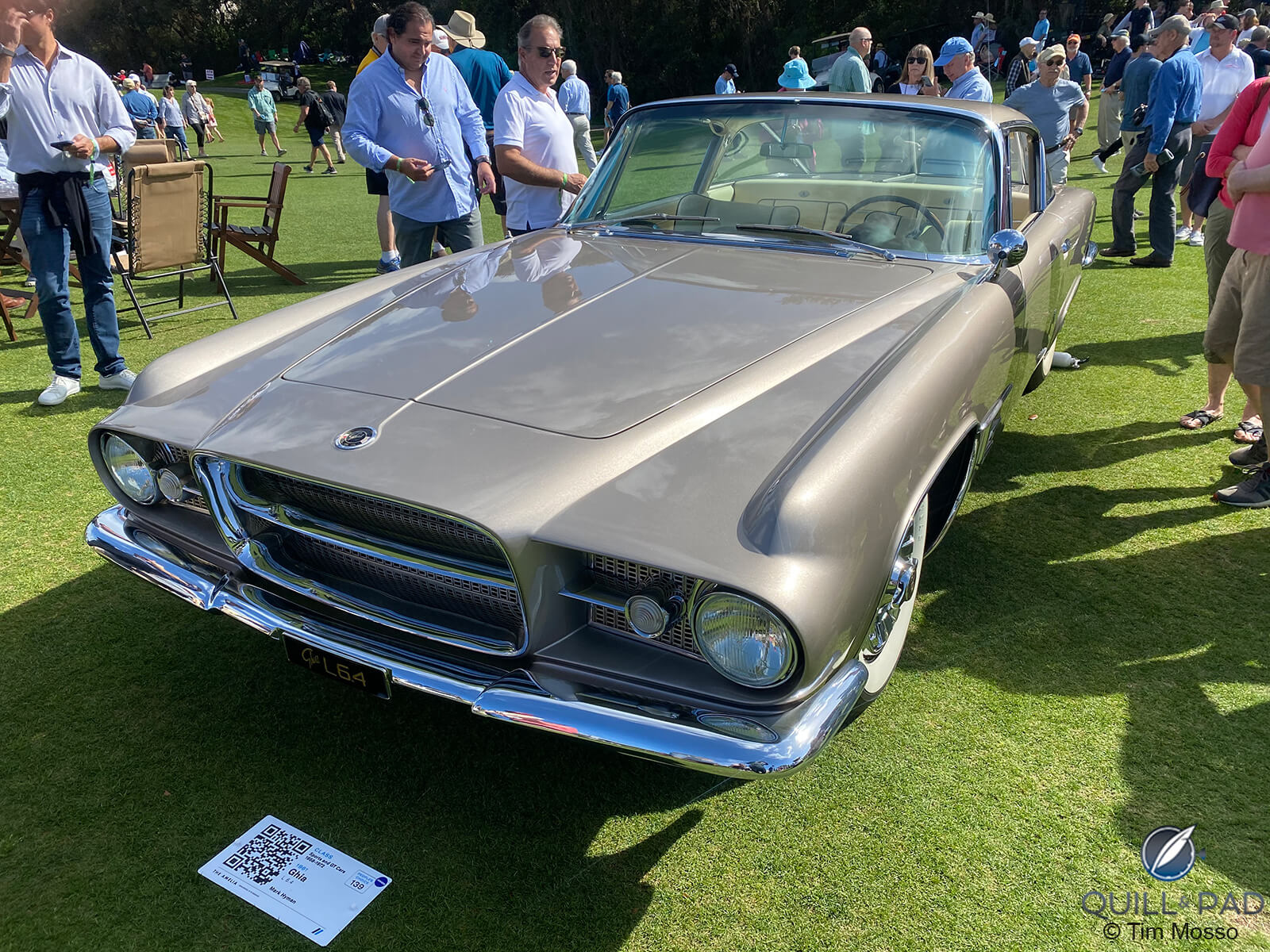
Ghia L6.4
The 1950s Dual-Ghia was revived in the 1960s as the more exotic Ghia L6.4. A reliable and powerful Chrysler 383 wedge V8 provided performance to match the fastest European grand tourers, and Ghia’s designers guaranteed road presence to rival Rolls Royce.

Interior of the Ghia L6.4
All L6.4s are custom built and unique, but the series’ general design and appointments were evident in the example on hand at Amelia Island. Exterior style is chiseled and athletic while interior build exudes decadent luxury. With only 25 built and fewer survivors, this was among the rarest cars at the show.
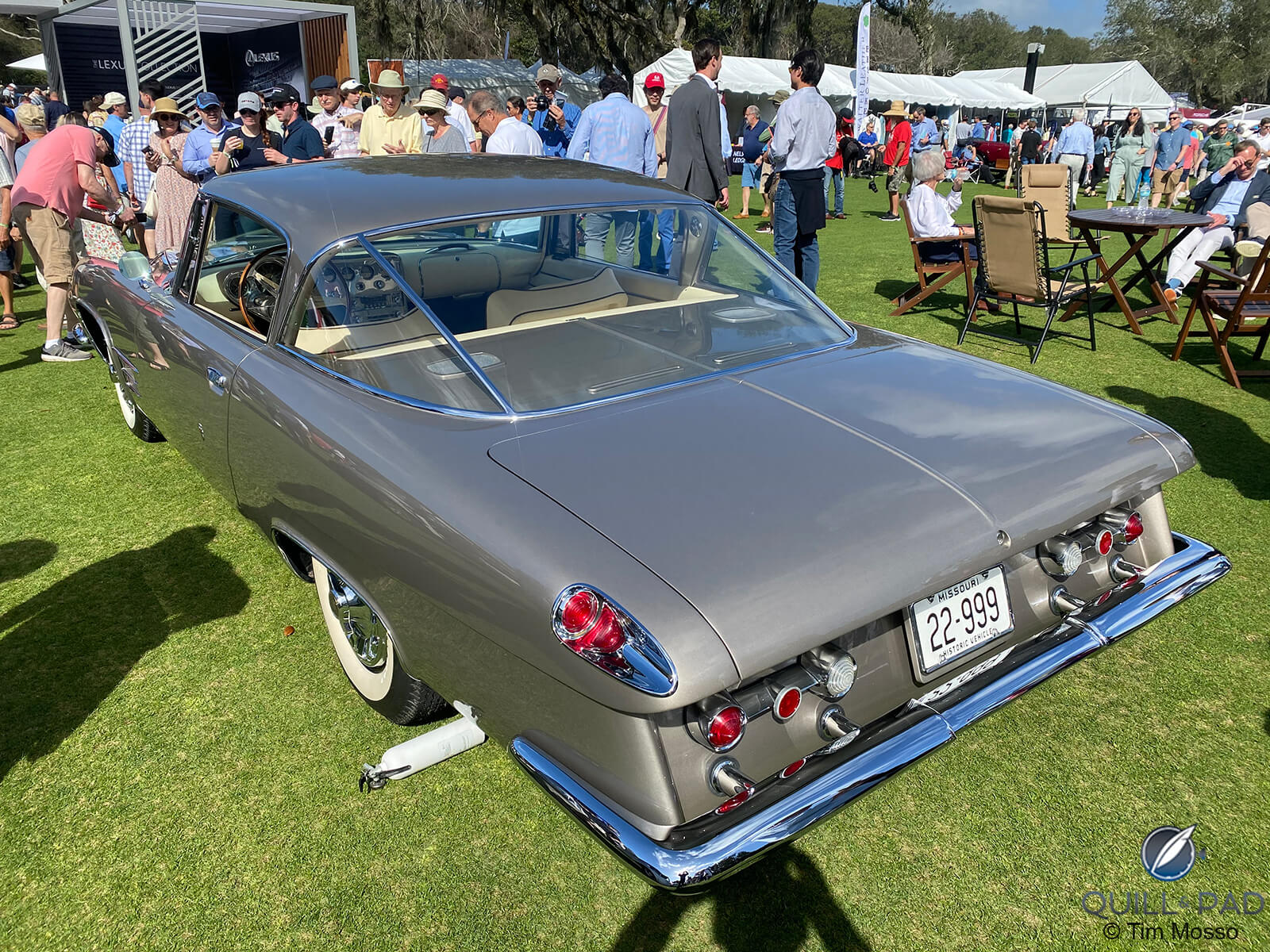
Back of the Ghia L6.4
For those who take an interest in vintage automobiles and warm weather in late winter, 2025’s edition of “The Amelia” runs from March 6 to March 9 at the Golf Club of Amelia Island.
Two-time Indianapolis 500 winner Hélio Castroneves with be featured and recognized for his long career in motorsports. Car shows, driving tours, lectures, and exhibitions from automobilia vendors will be featured during the three days of events.
For more information, please visit www.ameliaconcours.com/
* Tim Mosso is the media director and watch specialist at The 1916 Company. You can check out their very comprehensive YouTube channel at www.youtube.com/@the1916company.
You might also enjoy:
Leave a Reply
Want to join the discussion?Feel free to contribute!



Fans of Ferris Bueller’s Day Off should take a look on Youtube at the rather clever film mixing original footage from the movie and the car being driven by Sir Lewis Hamilton as a parking valet (it’s on Sir Lewis’s Youtube Channel).